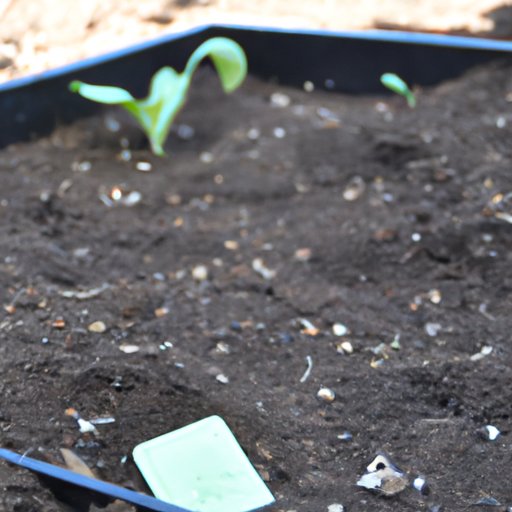Introduction
Growing your own vegetables is an enjoyable activity that comes with many benefits. You get to enjoy fresh produce straight from your garden, save money on groceries, and connect with nature. In addition, growing your own food is a great way to teach children about healthy eating habits and the importance of taking care of the environment.
For beginners, it’s important to understand the basic terms associated with gardening. “Planting” refers to putting seeds or seedlings into the ground. “Harvesting” means collecting the vegetables once they’re mature enough to eat. “Soil” is a mix of organic matter, minerals, air, and water which provides nutrients to plants. “Fertilizer” is a substance that contains essential nutrients to help plants grow.
Research the Best Vegetables to Grow in Your Area
The first step to starting a successful vegetable garden is to research the best vegetables to grow in your area. The climate and seasons will dictate what plants you can successfully cultivate. For example, warm weather crops such as tomatoes and peppers will not grow in cooler climates.
Online resources such as the National Gardening Association (NGA) website offer helpful information about what types of vegetables are suited for various climates. Additionally, there are many books available on gardening that provide valuable insight into which vegetables are best for certain regions. Local plant nurseries are also great sources of information; employees there can answer questions and help you find the right plants for your garden.
Create a Plan for Planting and Harvesting
Once you’ve chosen the vegetables you want to grow, it’s time to create a plan for planting and harvesting. Make a calendar of when to plant each type of vegetable and when to expect the harvest. Consider how much time you can devote to gardening, as this will affect when and how often you need to tend to your garden. Make a list of supplies you will need, such as tools, soil, seeds, and fertilizer.

Choose the Right Location for Planting
The next step is to choose the right location for planting. Sun exposure, soil quality, and access to water are all important factors to consider. Research the different types of gardens, such as traditional garden beds, raised beds, container gardens, and vertical gardens, to determine which one is best for your needs.
Prepare Soil for Planting
Before planting, you must prepare the soil. Test the pH levels to ensure the soil is suitable for growing vegetables. If needed, add compost or other amendments to improve the soil’s structure and fertility. Finally, till the soil to break up any large clumps and remove weeds.

Select Your Seeds and Plants
Now it’s time to select your seeds and plants. When shopping, consider which plant hardiness zones you live in and read the plant tags for care instructions. Buy quality seeds and plants from reputable sources to ensure they are properly labeled and tested for disease resistance.

Monitor and Maintain Your Garden
Finally, monitor and maintain your garden. Water regularly and fertilize the soil as needed. Pull weeds and watch for pests. With proper care and maintenance, your garden should yield a bountiful harvest.
Conclusion
Growing a vegetable garden is a rewarding experience. To get started, research the best vegetables to grow in your area, create a plan for planting and harvesting, choose the right location for planting, prepare the soil, select your seeds and plants, and monitor and maintain your garden. With these steps in mind, you’ll be well on your way to cultivating a beautiful and bountiful vegetable garden.
(Note: Is this article not meeting your expectations? Do you have knowledge or insights to share? Unlock new opportunities and expand your reach by joining our authors team. Click Registration to join us and share your expertise with our readers.)
